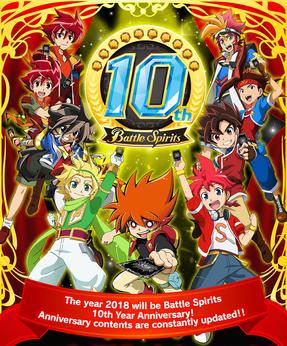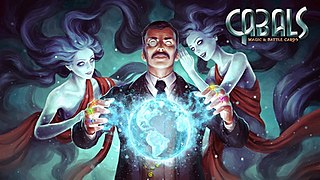Catan: Cities & Knights, formerly The Cities and Knights of Catan, is an expansion to the board game The Settlers of Catan for three to four players. It contains features taken from The Settlers of Catan, with emphasis on city development and the use of knights, which are used as a method of attacking other players as well as helping opponents defend Catan against a common foe. Cities & Knights can also be combined with the Catan: Seafarers expansion or with Catan: Traders & Barbarians scenarios.

Star Wars: The Trading Card Game is an out-of-print collectible card game produced by Wizards of the Coast (WotC). The original game was created by game designer Richard Garfield, the creator of the first modern trading card game, Magic: The Gathering. After its initial release in April 2002, the game was 'put on indefinite hold' by WotC in late 2005. The Star Wars Trading Card Game Independent Development Committee was created by a group of fans to continue development of the game. They design new cards that are available as free downloads at their website.

The Yu-Gi-Oh! Trading Card Game is a collectible card game developed and published by Konami. It is based on the fictional game of Duel Monsters created by manga artist Kazuki Takahashi, which appears in portions of the manga franchise Yu-Gi-Oh! and is the central plot device throughout its various anime adaptations and spinoff series.

WarCry is an out-of-print collectible card game set in the world of Warhammer Fantasy and published by Sabertooth Games. The base game cards were released in 2003, with newer expansions introduced in the months since. A video game adaptation, titled Warhammer: Battle for Atluma, was created for the PSP in 2006.

Memoir '44 is a light wargame or war-themed strategy board game for two players. It was created by Richard Borg and published in 2004 by Days of Wonder. Illustration done by Julien Delval and Cyrille Daujean. The game can be played with up to six players if played in teams and up to eight players in the "Overlord" scenarios. However, "Overlord" requires two copies of the game. It received the 2004 International Gamers Award for General Strategy, 2-Player category and The Wargamer 2004 Award for Excellence. The game is published in English and French by Days of Wonder.

Yu-Gi-Oh! The Duelists of the Roses is a video game developed by Konami based on the manga series Yu-Gi-Oh!. The game was released on September 6, 2001 in Japan, and worldwide throughout 2003. The story is a sequel to Yu-Gi-Oh! Forbidden Memories and is loosely based on the War of the Roses. The series' main characters, Yugi Mutou and Seto Kaiba, play opposing teams known as the Lancastrians and the Yorkists. Each team is playable, battling various characters throughout the plot to prevent a ritual summoning by using sorcerous rose cards.
A Game of Thrones is a strategy board game created by Christian T. Petersen and published by Fantasy Flight Games in 2003. The game is based on the A Song of Ice and Fire series of high fantasy novels by George R. R. Martin. It was followed in 2004 by the expansion A Clash of Kings, and in 2006 by the expansion A Storm of Swords.

Battle Masters is a miniature wargame by Milton Bradley, made in collaboration with Games Workshop in 1992. It is thematically similar to Warhammer Fantasy Battle, but with much simpler game mechanics. Like other Milton Bradley/Games Workshop partnership board games HeroQuest and Space Crusade, Battle Masters was designed by Stephen Baker, who later went on to design the popular game Heroscape.
Battle Cry is a board wargame based on the American Civil War, designed by Richard Borg and published by Avalon Hill in 2000.

The Harry Potter Trading Card Game is an out-of-print collectible card game based in the world of J. K. Rowling's Harry Potter novels. Created by Wizards of the Coast in August 2001, the game was designed to compete with the Yu-Gi-Oh!, Pokémon and Magic: The Gathering card games. Its release was timed to coincide with the theatrical premiere of the first film in the series. The game was praised for the way it immersed children in the Harry Potter universe. At one point the game was the second best selling toy in the United States; however, it is now out of print.

The World of Warcraft Trading Card Game is an out-of-print collectible card game based on Blizzard Entertainment's MMORPG, World of Warcraft. The game was announced by Upper Deck Entertainment on August 18, 2005 and released on October 25, 2006. Players can play against each other one-on-one, or can join others in order to defeat dungeon/raid "bosses" based on those in the MMORPG. In March 2010, Upper Deck lost the license from Blizzard Entertainment. The license was acquired by Cryptozoic Entertainment later in the month, with the company announcing that planned card sets would be released.

Horus Heresy is an out-of-print collectible card game originally produced in 2003 by Sabertooth Games. The game is set in the Warhammer 40,000 fictional universe developed by parent company Games Workshop. It attempts to recreate the struggle between the Loyalist forces of the Emperor of Mankind and the Traitor forces of Warmaster Horus, during the civil war known as the Horus Heresy. The game's development and sale by the publisher were discontinued in 2008, following financial difficulties at the parent company.

Wyvern is an out-of-print collectible card game featuring dragons and wyverns battling for treasure. The game was produced by U.S. Games Systems, with the first, "Premiere Limited", card set launched in January 1995. In 1997, the "Kingdom Unlimited" edition was released, featuring 277 cards, and marking the end of production.
StarCraft: The Board Game, published by Fantasy Flight Games, is a game inspired by the 1998 computer game StarCraft. Players take control of the three distinctive races featured in the video games, the Terrans, the Protoss, or the Zerg, to engage in battle across multiple worlds in order to achieve victory. Each of the three races features a fairly different playing style. A prototype of the game was shown in BlizzCon 2007, with pre-release copies sold at Gen Con 2007 and Penny Arcade Expo 2007. It was publicly released in October 2007.

Yu-Gi-Oh! Worldwide Edition: Stairway to the Destined Duel, later released in Japan as Yu-Gi-Oh! Duel Monsters International, is a Game Boy Advance game based on the popular Yu-Gi-Oh! trading card game and TV series that has the player set during the Battle City arc, dueling popular characters from the anime and manga. The main objective of the game is to build a strong deck from cards won after duels from the main cast from the English second season anime.

Paths of Glory: The First World War, 1914–1918 is a strategy board wargame, designed in 1999 by the six-time Charles S. Roberts Awards winner Ted Raicer and published by GMT Games. It covers World War I from its outbreak to the 1918 Armistice, or based on the progress of the game a hypothetical later ending of the war in early 1919, possibly due to exhaustion of Europe. The game is played on a map of Europe and the Middle East as the game board.

Battle Spirits is a two-player collectible card game (CCG) jointly developed by Bandai and Sunrise, Inc. and a franchise which also includes several anime series, manga serialisations, and other merchandise like toys and video games.

Battle Dex was an online, turn-based strategy game featuring collectible cards inspired by Advance Wars and Magic: The Gathering. An open beta of the game ran from April to November 2010 and the game was publicly released on November 7, 2010.

Cabals: Magic & Battle Cards is a digital collectible card game designed by Mika Rosendahl and developed by Finnish studio Kyy Games. The game combines a board mechanic and cross-platform online multiplayer gameplay. Cabals: The Card Game was published on November 30, 2011, for iPhone, iPad, Android and Internet Browsers. The newly named Cabals: Magic & Battle Cards was released on April 11, 2014.

Force of Will (フォースオブウィル) is a trading card game. It was originally released in Japan in December 2012 by Force of Will Co., Ltd. and later released to English speaking countries in 2013. Since 2019, the game has been developed by TCG Co., Ltd. and released by Eye Spy Productions. It has game mechanics similar to Magic: The Gathering. The game has a tournament circuit called Grand Prix.
















